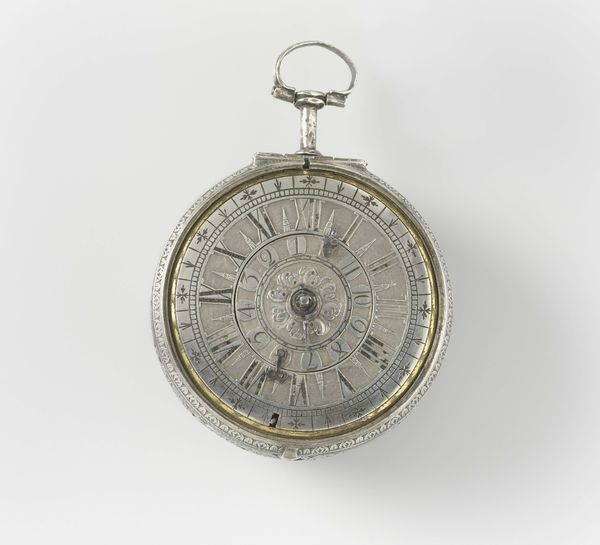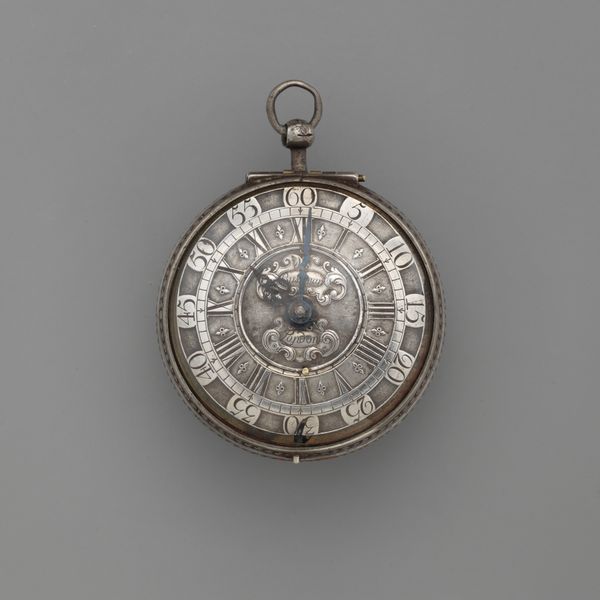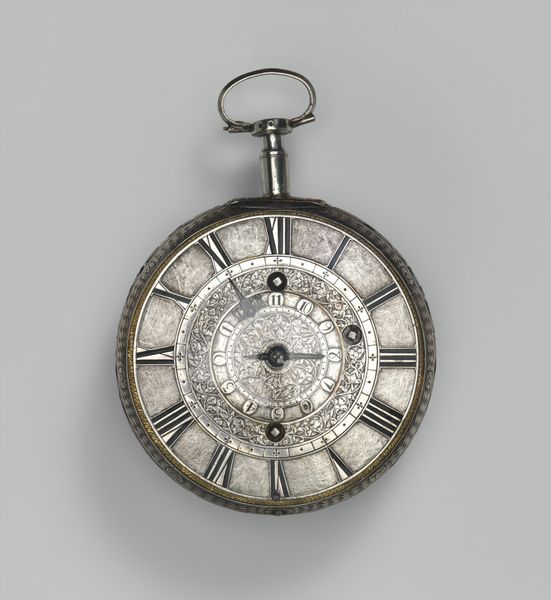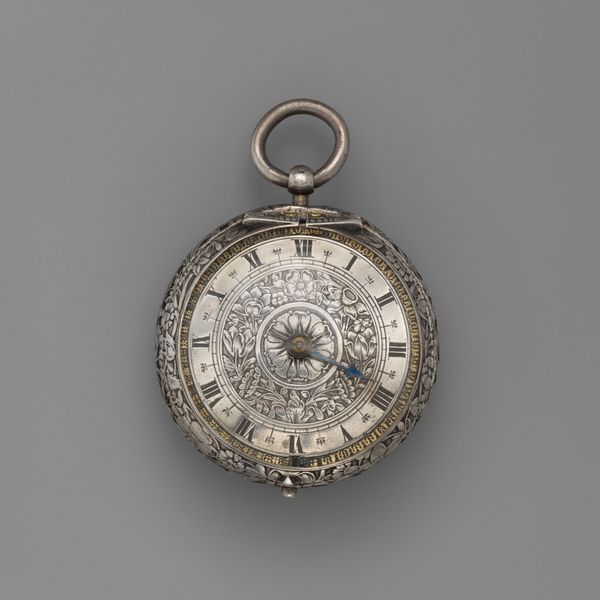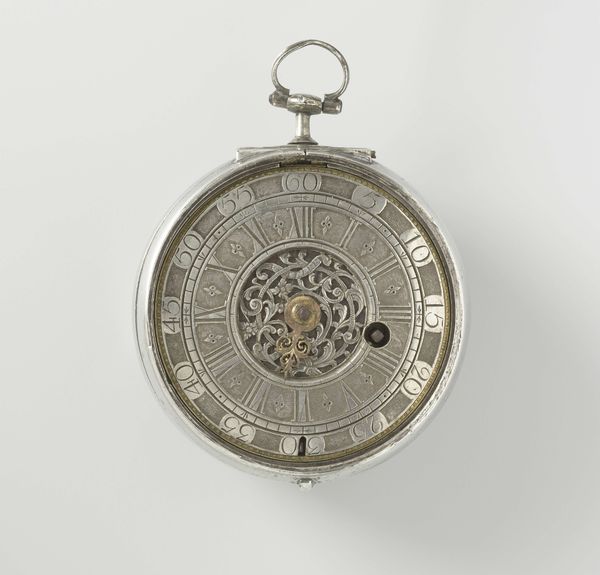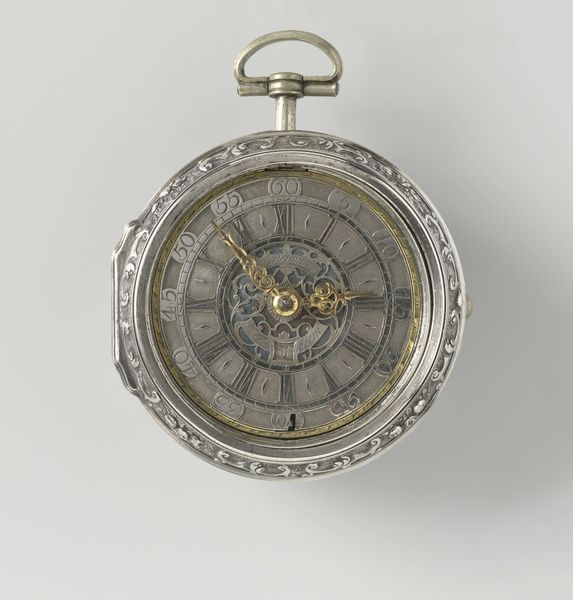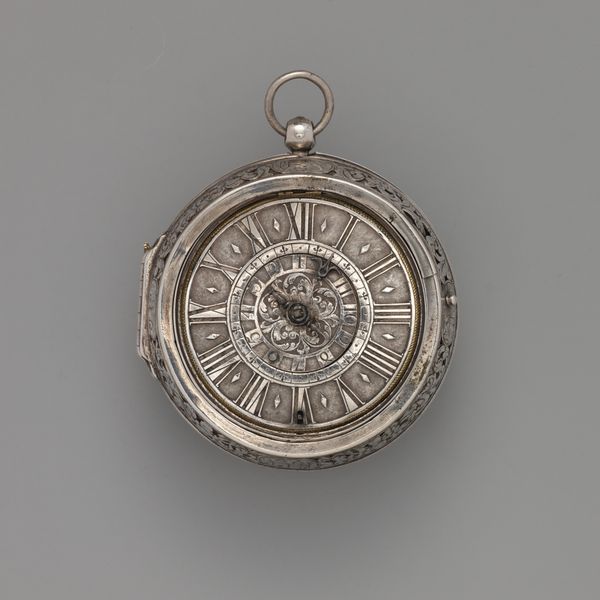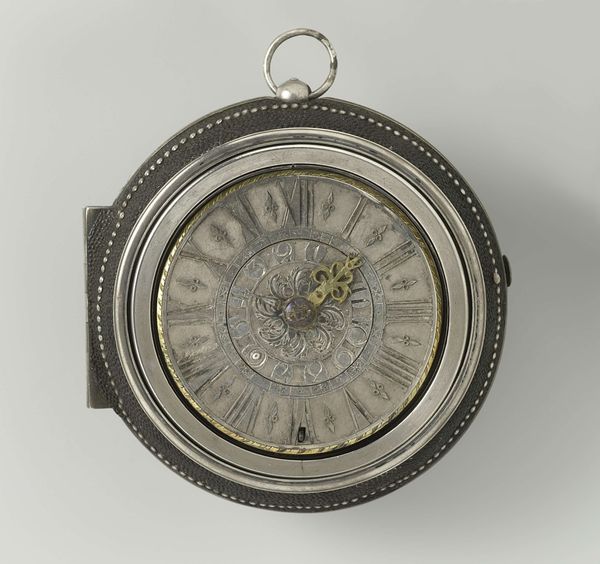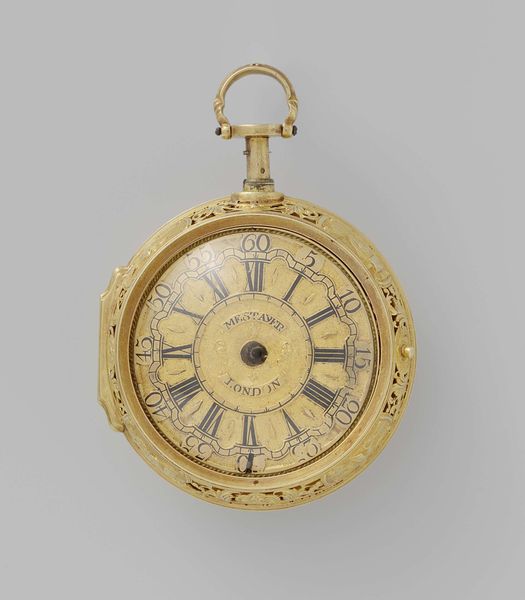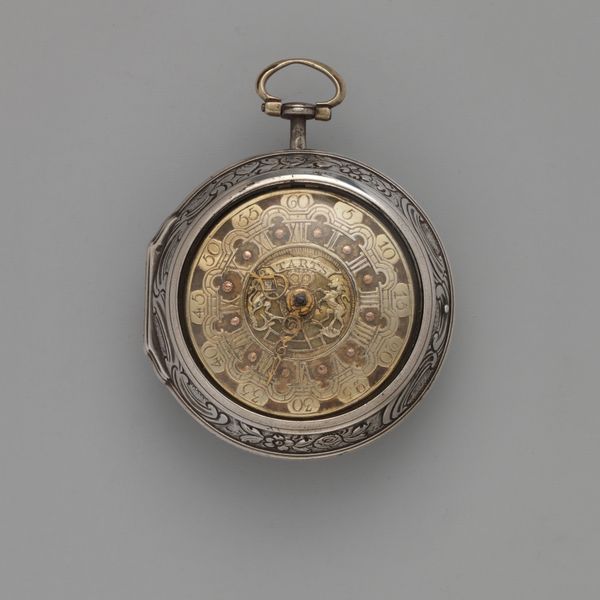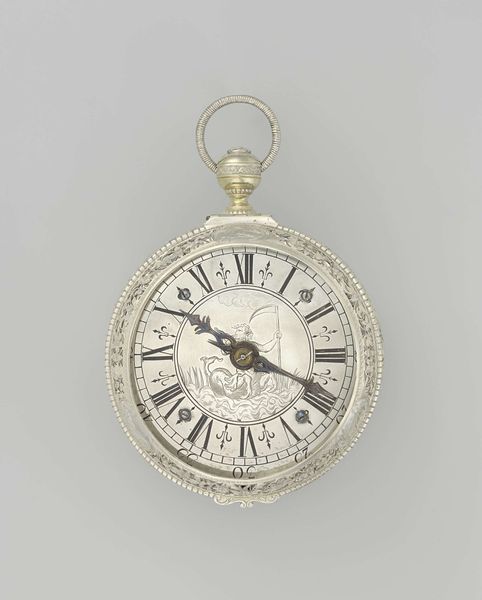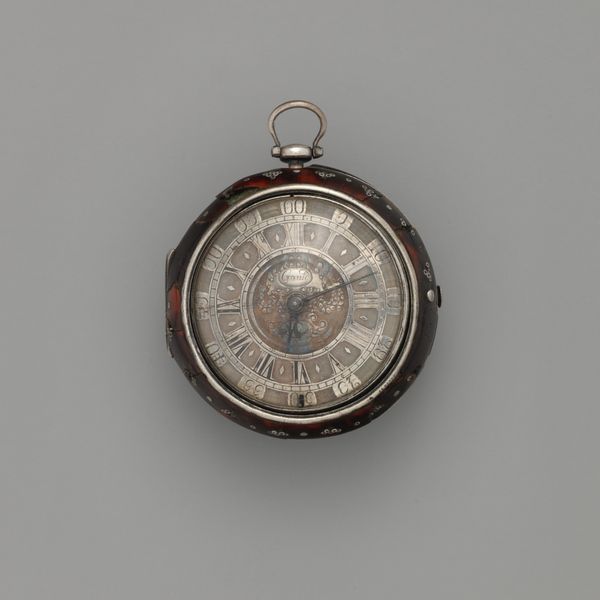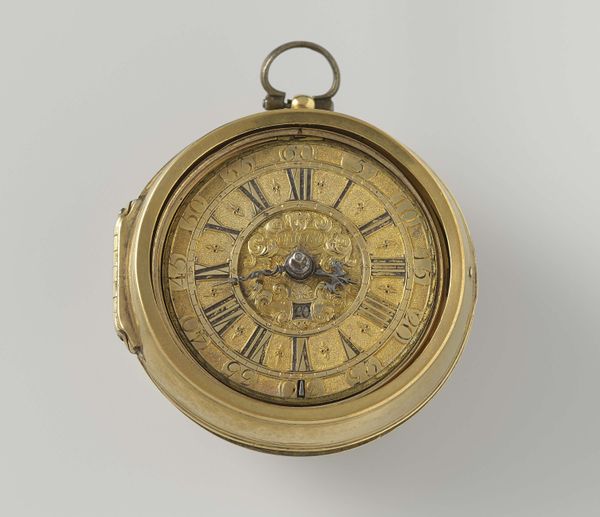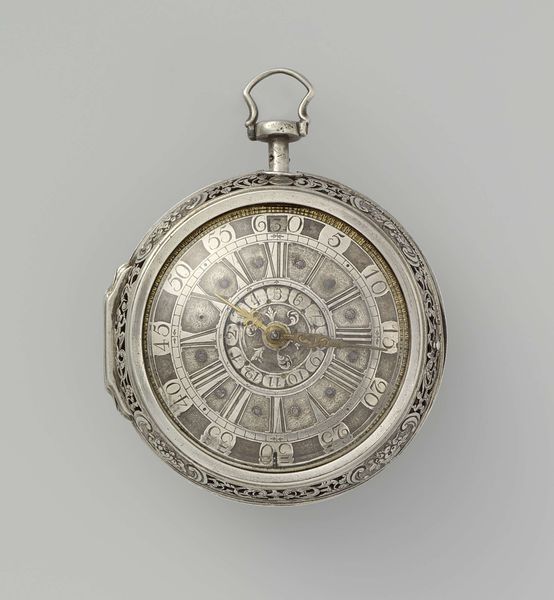
silver, metal
#
silver
#
baroque
#
metal
#
decorative-art
Copyright: Rijks Museum: Open Domain
Curator: I’m immediately drawn to the tactile coolness of this watch. Its silver casing, so precisely formed, and the weight…I can almost feel it in my hand. It was created by Barent van der Cloesen somewhere between 1690 and 1710, during the late Baroque period. Editor: Funny, the first thing that hit me wasn’t the coolness, but the gloom! It looks like time itself is wearing a sort of melancholy shroud, all in muted silvers. Does it evoke a sense of fading aristocracy to you? Curator: Interesting! For me, it’s about the democratization of time. Previously, time-telling devices were monumental, fixed to place – like church clocks. The pocket watch marked a significant shift; suddenly, the ability to track time became mobile and personal. Silver as a material would indicate someone of some wealth owned the watch, of course. Editor: So, silver, Baroque extravagance… a tiny declaration of independence! Imagine the hours of labor involved in its creation; the mining of the metal, its transportation, and the meticulous craftsmanship! Are there marks that give clues about that craft? Curator: Absolutely! We can trace not just the maker but potentially even the workshops involved based on the hallmarks. This watch also illustrates the fascinating interplay between high art and artisanal labor. The Baroque ornamentation isn't purely aesthetic; it represents a specific cultural value system intertwined with displays of status and technical prowess. The face features roman numerals too, but the numerals are interrupted every five minutes with standard Arabic numerals - interesting! Editor: Yes! I notice how those Roman numerals kind of circle inward, creating an odd, mesmerizing effect, drawing you into the "present moment"... It’s a bit dizzying, maybe even anxiety-inducing, like feeling time slipping through your fingers. Is that what Baroque was supposed to evoke? Curator: Perhaps in part. This ornamental density creates a world-within-a-world feeling on the clock face, almost a portal of some kind. This craftsmanship certainly pushes metal into a type of "high art", though. Editor: It's more than craft. This unassuming timepiece whispers stories about shifting societal structures, about the slow creep of industry, all encapsulated within a beautiful silver shell. I suppose "time marches on" even into history itself! Curator: And when you think of time in terms of material changes -- how the silver might have tarnished or been polished over the centuries -- the piece transforms once again into a document.
Comments
rijksmuseum about 2 years ago
⋮
Timepiece with an openwork or ajouré case often have an alarm, since the perforations in the case allow the sound of the bell to be heard. The movement is nevertheless well protected against dirt and dust because it has an inner and an outer case. The Dutch made this type of watchcase from around 1680: the exteriors were finely decorated with engraving. The openings in this case have a minutely executed pattern.
Join the conversation
Join millions of artists and users on Artera today and experience the ultimate creative platform.
